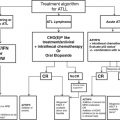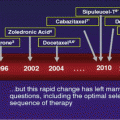Available
Available by request, if patient can afford
Rarely available
Capecitabine
Cisplatin
Cytarabine
Dactinomycin
Daunorubicin
Doxorubicin
Etoposide
Fluorouracil
Folinic acid
Hydroxyurea
Melphalan
Mercaptopurine
Methotrexate
Thioguanine
Vincristine
Bleomycin
Carboplatin
Dacarbazine
Epirubicin
Fludarabine
Gemcitabine
Ifosfamide
Interferon alfa
Irinotecan
Oxaliplatin
Pamidronic acid
Taxanes
Topotecan
Vinorelbine
Zoledronic acid
Bevacizumab
Erlotinib
Ibandronic acid
Imatinib
Rituximab
Sunitinib
Temozolomide
Trastuzumab
In gastric cancers, the morbidity and mortality rates are high. Major complications such as anastomotic leak and hemorrhage occur in as many as 30 % of the patients undergoing gastric resections [18], and operative mortality rates range from 16 to 36 % [19]. The high complication and mortality rates are likely related to the fact that outcomes in gastric cancer surgery are closely associated with stage of disease at diagnosis. Early surgical intervention, before tumor enlargement and involvement of nearby structures, may improve these rates. Most patients, however, present with gastric outlet obstruction, hematemesis, or perforation. Access to surgeons trained in endoscopy is necessary when patients have persistent symptoms of dyspepsia, epigastric pain, or nausea to identify early gastric cancers and to lower these mortality and morbidity rates.
4 Role of Surgery in Treatment of Prostate Cancer
Prostate cancer is the second most frequently diagnosed cancer among men and the sixth leading cause of cancer death among men globally [1]. The treatment for prostate cancer in LMICs is limited by late presentation, advanced disease, and scarcity of urologists, pathologists, radiation treatment, and androgen-deprivation therapies. Compared to the 99 % 5-year survival rates in HIC for all stages of prostate cancer, a study from Nigeria showed that 16 % of patients died from this disease within a 3-year follow-up period [20, 21].
Currently, subcapsular orchiectomy and diethylstilbestrol are the two most widely used treatments in low-income countries [21]. Subcapsular orchiectomy is a good example of a cost-effective alternative treatment that can be performed surgically in place of a medical treatment (chemical castration). Unfortunately, due to lack of access and the high cost of prostate-specific antigen tests and transrectal ultrasonography, digital rectal examination alone remains for screening. The specificity, however, of digital rectal examination has been shown to be only 61 % [22]. Increasing access to diagnostic tools, such as transrectal ultrasound for earlier detection of prostate cancer, and increasing access to adjunct treatments, such as radiation therapy, hormone therapy, and chemotherapy, are key to improving survival in these patients.
5 Role of Surgery in Treatment of Cervical Cancer
Cervical cancer is the leading cause of cancer mortality in low-income countries [23]. For example, in Africa, 80,000 cases of cervical cancer are diagnosed per year in women older than 15 years. More than 50,000 of these women die from their disease. This is mostly due to late presentation, because cervical cancer is often curable when found in early stages. It is clear then that efforts should focus on cost-effective screening that is easily available.
As mentioned above, one approach to reducing costs is to replace the traditional screening tests, cytology, and colposcopy, with VIA and/or rapid HPV DNA-based testing. These single-visit tests are appealing alternatives also because treatment, if needed, could be provided in the same day. Goldie et al., with data from five developing countries, demonstrated that if 35-year-old women were screened just once in their lives with VIA, their lifetime risk of invasive cervical cancer can decrease by 25 %. If screened twice with VIA, at ages 35 and 40, lifetime risk can decrease by 35 % [24]. HPV DNA-based testing was shown to be more effective at reducing the occurrence of advanced precancerous lesions over time. A study from India demonstrated that HPV DNA-based testing resulted in a greater mortality reduction than using VIA or Pap smear for screening [25]. However, HPV DNA-based testing is still relatively expensive and requires 7 h for laboratory processing. Therefore, a major focus should be on developing a low-cost screening test that would provide immediate and accurate results to enable screening, diagnosis, and treatment in the same visit. New, rapid HPV DNA-based testing is being developed for this purpose [26].
6 Role of Surgery in Treatment of Breast Cancer
Understanding how breast cancer in LMICs differs from breast cancer in high-income countries is crucial for surgeons. For example, patient characteristics in the high-risk groups are not identical from one region to the next. Notably, patients with breast cancer in sub-Saharan Africa tend to be premenopausal, multiparous, and have a history of protracted breastfeeding [27]. Such information can help clinicians target high-risk groups more effectively and reduce the current mean delay (11.2 months) from onset of symptoms to presentation [27].
Also, breast cancer biology in LMICs may differ from that in high-income countries. For example, in one study, researchers compared women with breast cancer in the United States to women with breast cancer in Ghana. Results showed that 76 % of the Ghanaian women had estrogen receptor-negative tumors in contrast with 22 % of the white American women. Also, 82 % of the Ghanaians had triple-negative disease in contrast with 16 % of the white Americans [28]. While such discrepancies may be in part due to inaccurate immunohistochemistry results, administering tamoxifen without confirming positive receptor status wastes valuable resources. Understanding the differences in tumor biology while also improving the accuracy of immunohistochemistry results may lead to more cost-effective interventions.
Lastly, it is important to realize that procedures that are offered in HICs may not be available in LMICs. For example, mastectomy is the most frequently offered breast cancer surgery in LMIC and is challenging culturally. It is estimated that 38.3 % of patients undergoing mastectomies are divorced within 3 years [29]. Surgeons should be attentive to this cultural barrier and work with the whole family in coming to an understanding of breast cancer and its treatments. Unfortunately, due to lack of resources, radiation therapy, chemotherapy, sentinel lymph node assessment, and breast-conserving surgery are rarely performed.
7 Chemotherapy and Radiation
Three major obstacles to delivery of appropriate multidisciplinary cancer care in LMIC are lack of personnel, high cost, and cultural beliefs. First, chemotherapy regimens are administered under direction of either surgeons or physicians, without specialized training in cancer care. With multidisciplinary cancer management adoption by tertiary hospitals, this will improve. Second, generic drugs are often used because the cost of patented drugs is prohibitive. This has negative effects because in the absence of regulatory bodies to control the influx of these medications, the bioequivalence, side-effect profile, and efficacy of generic drugs may differ from those of the originals. It is important for countries to identify which drugs are available (Table 1) and to calculate the cost to patients. It is also important to calculate the cost of chemotherapy maintenance as many drugs to treat chemotherapy-associated toxicities are either expensive or not readily available (Table 2). This information will help resource-limited LMICs to select the most cost-effective chemotherapy drugs. Cultural beliefs, patient denial, especially after complete surgical resection, and physician ignorance are all barriers to access. Also, traditional healers offer the promise of a cure without the side effects of chemotherapy such as hair loss, erectile dysfunction/infertility, or neuropathy.
Table 2
Availability of supportive drugs to manage chemotherapy-associated toxicities in sub-Saharan Africa
Available by request, if patient can afford | Rarely available |
|---|---|
Metoclopramide | Domperidone |
Dexamethasone | Granisetron |
Ondansetron | Erythropoietin |
Lorazepam | Granulocyte colony-stimulating factor
Stay updated, free articles. Join our Telegram channel
Full access? Get Clinical Tree
 Get Clinical Tree app for offline access
Get Clinical Tree app for offline access

|


